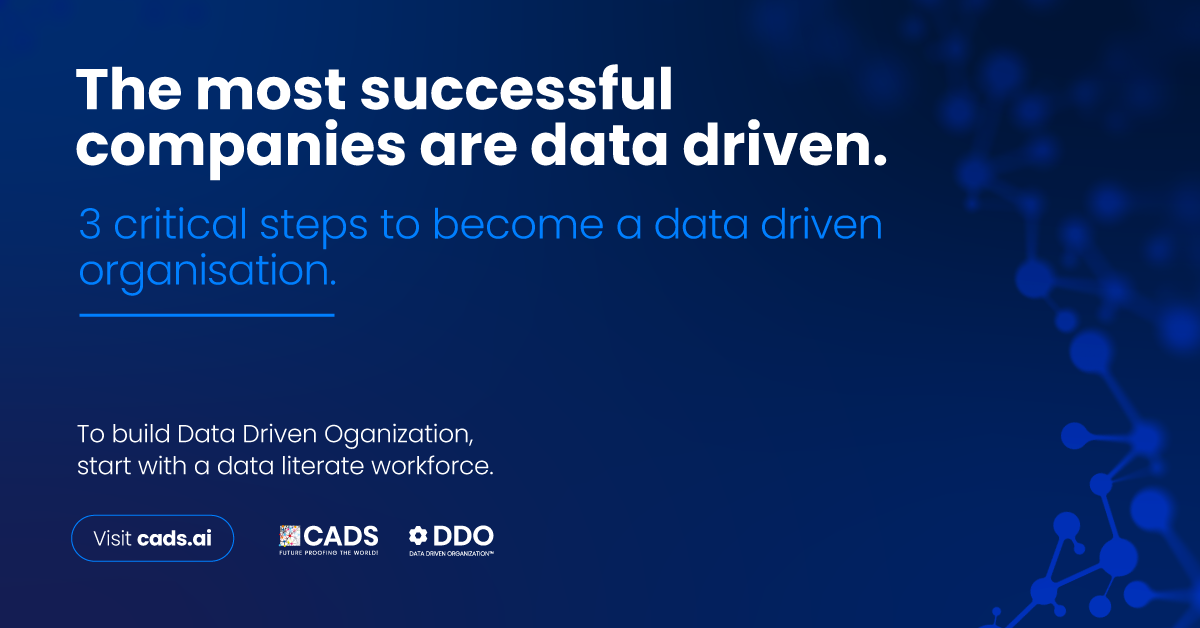Building a Data-Driven Organization is within your reach

Stand first: Once they are armed with the right knowledge, business leaders can successfully transform their organization into a digital, data-driven one.
Organizations of today need to undergo digital transformation and capitalize on the data they must get ahead in the business world. The recent pandemic has “woken up” many business leaders to the fact that they need to lead digital transformation to stay in the game.
The honest truth? Many organizations are sitting on hundreds, if not thousands, terabytes of data, led by business leaders with no clue on how to leverage data to achieve their business goals.
Part of this digital transformation entails turning their organizations into data-driven ones. However, many business leaders are unclear on what this actually means and how they can go about achieving this goal.
Numbers do not lie
If you observe the Fortune 500 companies that are generating continuous traction and gaining market share, they happen to be the ones that are data-driven and powered by AI (artificial intelligence).
Think of big names such as Alphabet (which owns Google), Amazon, Alibaba, and Walmart. All these companies are fully data-driven organizations, and highly profitable, to boot. This is no accident. Many of these companies have been featured in case studies on Big Data and AI helping them transform their businesses for the better.
Walmart, for instance, saw an increase in its sales turnover due to Big Data analytics. Walmart has built the largest private cloud data cafe to analyze their sales from all stores daily. They use this detailed information about what products are being sold, when they should be available at certain locations for customers of different ages and pricesets- both online and offline -to better strategize future product lines that will meet demand across regions around America while also satisfying customer preferences.
As for Amazon, one way it utilizes data is through its recommendation engine. When a customer searches for a specific item, Amazon can better predict other items the customer may be interested in. Its personalized recommendation system is estimated to account for 35% of the e-commerce giant’s annual sales.
Here in Asia, Alibaba has been hugely successful thanks to Big Data analytics and AI. The company has created a software called “E-commerce Brain”, which deploys real-time online data to predict consumer wants. What’s more, the models are constantly updated for everyone through AI to factor in account purchase history, browsing history and online activities.
Some Internet giants are using Big Data for more altruistic reasons. Alphabet has a project called Mineral which is using robotics and Big Data analytics to target food sustainability in the fight against global hunger and to address global food shortages.
It all begins with you
Obviously, the above companies started somewhere before they achieved their phenomenal successes. The question to ask yourself now, is: “where does my organization fit in the data-driven organization spectrum?”
On the bright side, wherever you’re at now doesn’t matter as much as kickstarting the process to get your organization to where you want it to ultimately be—the data-driven, digital organization of the century.
To get there requires some self-assessment: that of your organization’s readiness, as well as the people that are in it (yes, that includes you and the other C-suites). You need your data driven maturity assessed, something that we at The Center of Applied Data Science (CADS), specialize in. The data driven maturity assessment entails you discovering and understanding the actions steps needed to become a data-driven business.
The next step is data driven alignment, namely, gaining clarity of the exact interventions needed to close the skills gap within your existing talent pool. Next up is a data literacy assessment, which helps in meeting the current and future requirements of your digital business. We can assist you in verifying the data literacy skills of your existing workforce via our industry-standard assessments, which assess 32 technical skills and 16 smart skills.
Once this is accomplished, CADS can help you create learning paths and carry out skills mapping for your employees. Be aware that the need to understand how insights can be derived from data through analytics is key to how every employee engages in a modern digital business. Hence, it is important to invest in building the data literacy skills of every employee in your organization.
The final step is creating an internal marketplace and incubator projects to help you complete the data-driven digital transformation journey. This is where you will be able to calculate the return on investment you have made by investing in developing your skill sets and that of your C-suite colleagues, and your employees. Can these skills solve business problems? If the answer is yes, consider your goal achieved.
For more information on how CADS can help you with your organization’s data-driven and digitalization journey, visit: https://www.thecads.com/data-driven-organization/

